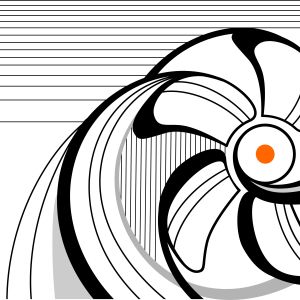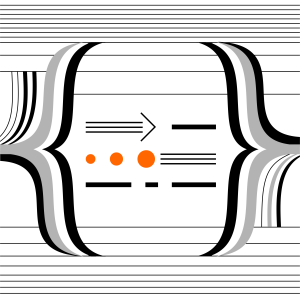The Slow, Furious World of Giant Ship Engines
Look, you probably ordered something online recently. A book, a weirdly specific kitchen gadget, 200 tiny rubber ducks. You clicked "buy," and a few days later, a box appeared at your door. This wasn't magic. It was, in large part, the work of a colossal, city-block-sized metal heart, burning low-grade fuel in the middle of an ocean, turning a propeller the size of a house. We're talking about marine diesel engines, the unsung, gargantuan heroes of globalization. This article isn't just about oily pistons; it's about the companies that got into an arms race to build the most powerful, most efficient, and most absurdly large machines on the planet. We’ll dive into the history of titans like MAN, Wärtsilä, Caterpillar, and Yanmar, look at their most iconic engines, and try to understand how these slow-moving behemoths quietly dictate the pace of the modern world.
Introduction: The Thing That Moves Your Stuff
Let’s be honest. Nobody daydreams about marine diesel engines. You might daydream about the yacht one of these engines powers, or the tropical vacation made possible by the cruise ship it pushes through the waves. But the engine itself? It’s a loud, hot, greasy behemoth hidden in the belly of a steel beast, about as glamorous as industrial plumbing.
And yet.
That unglamorous box of metal is the prime mover of, well, almost everything. About 90% of global trade travels by sea. The phone in your hand, the coffee in your mug, the car in your driveway—chances are, they all spent a few weeks on a container ship pushed by a single, colossal engine. These aren't just engines; they are economic forces expressed in steel and fire. They are geopolitical chess pieces whose fuel efficiency can make or break a shipping line's quarterly earnings.
So, how did we get here? How did we get to a point where a single engine, like the Wärtsilä-Sulzer RTA96-C, has a crankshaft that weighs 300 tons and produces over 100,000 horsepower? It wasn’t a single invention, but a slow, grinding evolution driven by four or five companies that have been in a quiet, century-long war for dominance of the high seas.
This is the story of those companies. The German visionaries, the Finnish survivors, the American workhorses, and the Japanese masters of precision. Forget fast cars; we're going into the world of the slow and the furious.
Chapter 1: A Little Engine Primer (Before We Meet the Titans)
Before we can appreciate the corporate drama, we need to get our hands metaphorically dirty with some basics. It all started with a guy named Rudolf.
Rudolf Diesel’s Unfortunate Genius
In the 1890s, Rudolf Diesel had a brilliant, world-changing idea: an engine that used the heat generated by compressing air to ignite fuel, making it vastly more efficient than the steam and gasoline engines of the day. It was revolutionary. It was also, for him, a bit of a disaster. He was a visionary, not a businessman, and spent years fighting patent trolls and partners. He mysteriously disappeared from a steamship in 1913, just before his engine was about to truly conquer the world. It’s the ultimate inventor’s tragedy: he built the machine that would power the 20th century but didn't quite stick around to see the profits.
His legacy, however, is two main flavors of engine that dominate the seas today.
Two-Stroke vs. Four-Stroke: The ADHD Engine vs. The Methodical Planner
This is the fundamental religious divide in the world of big engines.
-
The Four-Stroke Engine: This is what’s in your car. It’s a methodical, four-step process: Intake, Compression, Power, Exhaust. Suck, squeeze, bang, blow. It takes two full rotations of the crankshaft to get one power stroke. It’s reliable, it’s flexible, it can run at high RPMs. It's the sensible accountant of the engine world.
-
The Two-Stroke Engine: This is the hyper-caffeinated, deadline-driven maniac. It combines the four steps into just two, getting a power stroke for every single rotation of the crankshaft. Intake and exhaust happen simultaneously in a chaotic puff of air. It’s like trying to exhale and inhale while shouting. The result? Staggering amounts of torque at incredibly low speeds (we’re talking 80-120 RPM, slower than a vinyl record).
Why does this matter? For a giant container ship, you don’t need speed; you need torque. You need raw, planet-twisting force to turn a 10-meter-tall propeller through the water. The low-speed two-stroke engine is perfectly designed for this. It’s directly coupled to the propeller shaft—no gearbox needed. It’s simple, it’s monstrously powerful, and it’s the undisputed king of the supertankers and container ships.
Four-stroke engines are the supporting cast: they run the generators that power the ship's lights and systems (auxiliary engines), and they power smaller vessels like tugboats, ferries, and offshore supply vessels that need more speed and flexibility.
Now that we have the vocabulary, let's meet the players.
Chapter 2: The Titans of Torque
The market for massive, ocean-going two-stroke engines is basically a duopoly. It’s the Coke and Pepsi of gargantuan power, with a few other significant players dominating the four-stroke and medium-speed markets.
1. MAN Energy Solutions: The German-Danish Juggernaut
If anyone can claim to be the direct descendant of Rudolf Diesel, it’s MAN. Maschinenfabrik Augsburg-Nürnberg (MAN) is where Diesel developed his first functional prototype in 1897. Their history is literally the history of the diesel engine.
But their story gets really interesting in 1980 when they acquired the Danish engine builder Burmeister & Wain (B&W). This wasn't just a merger; it was the fusion of two engine-building philosophies. B&W was a pioneer in marine propulsion, building the engine for the first-ever ocean-going diesel-powered vessel, the Selandia, in 1912.
Today, MAN designs the engines in Copenhagen and Augsburg, and then licenses the designs to builders across the world (mostly in Korea and China). They are the architects, not necessarily the bricklayers. Their brand is so dominant that for decades, "a B&W engine" was just shorthand for "the main engine."
Iconic MAN Engines:
-
The K-MC Series (e.g., K98MC): This was the mechanical workhorse of the late 20th century. For decades, if you were on a large ship, it probably had a version of the MC engine. It was controlled by a giant camshaft—a massive, rotating steel log with lobes that physically pushed open fuel pumps and exhaust valves. It was brilliantly mechanical, a masterpiece of clockwork on a biblical scale. But it was also rigid. Timing was baked into the steel.
-
The ME-C Series (e.g., 9L90ME-C): This is where things got brainy. The ME-C represents the leap from mechanical to electronic control. They took that giant camshaft and threw it in the trash. In its place, they put a hydraulic system controlled by computers. Suddenly, the engine had a brain. Instead of a clunky, mechanical "player piano" dictating the timing, you had a synthesizer that could adjust the melody on the fly. This allowed for incredibly precise control over fuel injection and valve timing, leading to massive gains in efficiency and lower emissions. The "C" stands for "Compact," because removing the camshaft made the whole thing shorter.
-
The ME-GI Series (e.g., G95ME-GI): The future, or at least the present transition. The "GI" stands for "Gas Injection." As environmental regulations (we’ll get to the alphabet soup of IMO tiers later) tightened, shipping needed to find cleaner fuels. The ME-GI is a dual-fuel two-stroke engine that can run on conventional heavy fuel oil or switch to cleaner-burning Liquefied Natural Gas (LNG). It’s a masterpiece of engineering, essentially running a controlled explosion of high-pressure gas in a cylinder the size of a small room.
-
Other Notable Models: MAN's portfolio is vast. You'll hear about the S-series (with a longer stroke for higher efficiency), the G-series (even longer stroke for ultra-slow steaming), and their extensive lineup of four-stroke engines like the 32/44CR and 48/60CR that use Common Rail technology for auxiliary power and smaller ships.
2. Wärtsilä Corporation: The Finnish-Swiss Powerhouse
Wärtsilä’s story begins not with engines, but with a sawmill in a small Finnish village in 1834. They evolved into a major industrial force, and like MAN, their current dominance comes from a strategic acquisition: the Swiss engine maker Sulzer in 1997.
Sulzer was the other historical giant. If a ship didn't have a B&W engine, it probably had a Sulzer. The rivalry was legendary. By acquiring Sulzer's marine engine division, Wärtsilä instantly became the "Pepsi" to MAN B&W's "Coke."
Wärtsilä, headquartered in Helsinki, operates on a similar licensing model. They design the engines, and shipyards around the world build them. They are known for pushing the boundaries of what is physically possible.
Iconic Wärtsilä Engines:
-
The Wärtsilä-Sulzer RTA96-C: This is the celebrity. The poster child for engine superlatives. When someone on the internet posts a picture of "the world's largest diesel engine," it's this one. The 14-cylinder version (14RTA96-C) was built for the giant Emma Mærsk class of container ships. The stats are just fun to recite: 107,390 hp, 5.6 million lb-ft of torque, 2,300 tons in weight, and over 80 feet long. Each piston is 20 feet tall. Standing next to it is a deeply humbling experience. It is the pinnacle of the purely mechanical, camshaft-driven era.
-
The Wärtsilä 31: This one is famous for a different reason: efficiency. It’s a four-stroke engine, but in 2015, Guinness World Records declared it the most efficient four-stroke diesel engine on the planet. Why does this matter? Fuel is the single biggest operating cost for a ship. An efficiency gain of a few percentage points doesn't sound like much, but when you're burning hundreds of tons of fuel a day, it translates into millions of dollars saved per year. The Wärtsilä 31 comes in diesel (31DF), dual-fuel (31DF), and pure gas (31SG) versions, making it a versatile choice for cruise ships, ferries, and offshore vessels.
-
The X-DF Series (e.g., X92DF): This is Wärtsilä's answer to MAN's ME-GI. It’s their dual-fuel, low-speed two-stroke engine series. But they took a different technological path. While MAN uses a high-pressure gas injection system (the Otto cycle), Wärtsilä’s X-DF uses a low-pressure system (the Diesel cycle). It’s a deeply technical debate, but the gist is that Wärtsilä’s system is simpler and avoids the need for extremely high-pressure gas compressors onboard. Shipping nerds love to argue about which approach is better. It's the "iOS vs. Android" debate for people who move refrigerators across oceans.
-
Other Notable Models: The RT-flex series was Wärtsilä's electronically controlled common-rail version, the direct competitor to MAN's ME-C. You'll also see their popular four-stroke engines like the Wärtsilä 20, Wärtsilä 32, and Wärtsilä 46F all over the world in various applications.
3. Caterpillar Inc.: The American All-Rounder
Caterpillar is a different kind of beast. The Peoria, Illinois-based giant isn't really in the business of building the colossal two-stroke engines that push supertankers. That’s not their game. Caterpillar is the Ford F-150 of the marine world. They are everywhere, they are tough as nails, and they dominate the medium- and high-speed four-stroke markets.
If you’re on a tugboat, an offshore oil rig supply vessel, a fishing trawler, a superyacht, or if you're looking at the auxiliary generator sets on a huge container ship, you are very likely looking at a yellow CAT engine. Their brand is built on reliability and a truly global service network. If your CAT engine breaks in a remote port in Southeast Asia, there’s a good chance a guy in a CAT hat can be there with the right parts in 24 hours. That peace of mind is priceless.
In 1996, Caterpillar acquired the German company MaK (Maschinenbau Kiel), which significantly expanded their portfolio into larger, medium-speed engines, putting them in more direct competition with Wärtsilä and MAN in the cruise and ferry markets.
Iconic Caterpillar Engines:
-
The 3500 Series (e.g., 3512, 3516): This is arguably one of the most successful industrial engine platforms ever created. The 3516 is a 16-cylinder V-engine that has powered everything from locomotives and mining trucks to thousands of marine vessels. In the marine world, it's the gold standard for harbor tugs, ferries, and as generator sets on larger ships. It’s known for being utterly indestructible.
-
The C280 Series (e.g., C280-16): This is a step up in power and size from the 3500 series, aimed at larger applications like offshore supply vessels and salvage tugs that need serious muscle. It’s CAT’s high-performance workhorse for when the job gets really tough.
-
The MaK M 43 C: Through their MaK brand, CAT competes in the big leagues of four-stroke propulsion. The M 43 C is a powerhouse often found on cruise ships and large Ro-Ro (Roll-on/Roll-off) ferries. These engines are known for their power density and reliability in demanding, continuous operation.
4. Yanmar Co., Ltd.: The Japanese Precision Master
Like Caterpillar, Yanmar isn't competing for the "world's biggest engine" title. The Osaka-based company, founded in 1912, carved out a different niche: absolute, uncompromising quality and efficiency in small- to medium-sized engines.
Yanmar's philosophy is one of precision engineering. They commercialized the world's first small, practical diesel engine in 1933. While the Germans and Swiss were building behemoths, Yanmar was perfecting the art of the compact, reliable marine engine. They dominate the markets for sailboats, pleasure craft, and smaller commercial vessels. They are also a major player in the medium-speed auxiliary engine market for larger ships.
Iconic Yanmar Engines:
-
The 6LY Series: If you've been on a medium-to-large recreational powerboat or motor yacht in the last 20 years, it very likely had a Yanmar 6LY engine. This series is legendary among boaters for its power-to-weight ratio, smoothness, and near-bulletproof reliability. It’s a high-speed, turbocharged engine that delivers performance without shaking the boat apart.
-
The EY Series (e.g., 6EY26W): This is Yanmar's medium-speed workhorse for commercial applications. You'll find these engines powering domestic ferries in Japan, offshore support vessels in the North Sea, and large fishing trawlers everywhere. They are designed for continuous, hard use and easy maintenance.
-
The 8EY33W: This engine represents Yanmar's push into more powerful applications, including diesel-electric propulsion systems for larger, more complex vessels. It shows their ambition to scale their reputation for quality into higher-power brackets.
Chapter 3: The Generational Game & The Alphabet Soup
The history of these companies isn't just about mergers and models; it's about technological leaps. We can broadly define three generations of modern marine engines:
-
The Mechanical Age (The 1970s-1990s): This was the era of the MAN K-MC and the Sulzer RTA. Everything was controlled by the camshaft. They were powerful and simple, but not particularly efficient or clean. Think of it as a carbureted muscle car.
-
The Electronic Age (The 2000s-2010s): The MAN ME-C and Wärtsilä RT-flex changed the game. By removing the camshaft and adding computer controls, engines became "intelligent." They could optimize themselves for fuel efficiency at different loads and meet the first wave of environmental regulations, like the IMO Tier I and Tier II standards for NOx (Nitrogen Oxide) emissions.
-
The Dual-Fuel Age (Today and Beyond): The pressure is on. The International Maritime Organization (IMO) has cracked down hard. The "IMO 2020" rule forced a massive global switch to low-sulfur fuels. Now, Tier III NOx regulations in certain areas require emissions reductions of about 80% from Tier I. And looming on the horizon are ambitious targets for decarbonization (cutting CO2).
This regulatory pressure is the primary driver of innovation today. It’s why MAN’s ME-GI and Wärtsilä’s X-DF engines exist. Running on LNG slashes sulfur and particulate emissions and significantly reduces NOx and CO2. The next great race is already on to develop engines that can run on truly "zero-carbon" fuels like ammonia and methanol. All the major players are pouring billions into this research. The company that cracks the code for a reliable, safe ammonia-powered engine will likely dominate the market for the next 50 years.
Conclusion: The Heartbeat of Commerce
So, the next time you unbox that thing you ordered online, spare a thought for the engine that brought it to you. It wasn't a sleek, high-tech machine from a sci-fi movie. It was likely a slow-revving, two-stroke behemoth, a direct descendant of a design conceived over a century ago in Germany or Denmark, likely built in Korea, and burning fuel in the middle of the Pacific.
It’s a product of a quiet, intense, multi-billion-dollar rivalry between a handful of companies that most people have never heard of. They compete not on speed, but on mind-bending torque and fractions of a percentage point in fuel efficiency. Their creations are too big to comprehend, too slow to be exciting, and too important to ignore. They are the slow, furious, and utterly essential heart of the global economy. And right now, in a shipyard somewhere, an even bigger, smarter, and cleaner one is being built.





